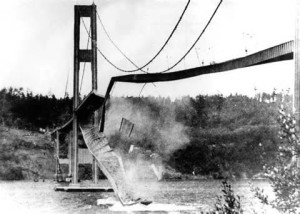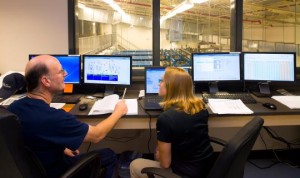Engineers
Engineers design things. It may be lines of code for a computer application or the Golden Gate Bridge. They have been at it for a long time. Stonehenge, the pyramids, Petra, Roman roads, bridges, and aqueducts; all started as an idea in someone’s mind. He then added the details to make the thing work.
The details. You can conceive of a bridge over a stream, but it has to be assembled, stay in one piece, support the loads going over it, and hold back the flood. It would be nice if it looks good. In addition it should not cost more than is necessary. That is asking a lot, and in most cases the product is good at its job. Think of it, are the stream banks solid rock or mud? How deep is it, how do you support the bridge as it is being built? What material to use? Stone, wood, steel, iron? What about the approaches? How do you get the rainwater or snow off?
There are lots of questions to be asked, and the answers have to be backed up by the numbers. Stress, load, vibration, weather, wind, soil characteristics, and myriad other details have to be calculated. Calculations can be avoided only if the thing is so overbuilt that little harm can come to it. It is hard to do stress analysis with Roman numerals, thus things were overbuilt enough that they are still in service today.
Currently, overbuilding is not an option due to cost considerations. The thing has to do its job, last for its design life, be easy to work with, and not cost too much. I spent thirty years in the water treatment business, and everything in the business has engineering behind it. Most of the time everything works fine. But, engineers make mistakes. Walls collapse, processes don’t work, the power to a pump shorts out, the concrete leaks. When you turn the new thing on, the software may not work. All the engineering is critical, because the water has to go down the pipe to the customer, safely.
For thirty years, I treated water using the engineers products. Sometimes the product was faulty, but we had to make it work anyway. The net result of this is that after working with the mistakes for so long, I have a deep, strong, profound anti-engineer bias. In addition, engineers tend to be serious nerds. They often are weak in social skills, and have difficulty communicating with others. Lots of them know they are right, and refuse to listen to input from others who are not engineers. Mistakes get perpetuated. I must concede, however, that their stuff mostly works.
The problems can be minor, like not putting the drains in the low spot to forgetting to account for water hammer in a piping system and pipes separate, flooding things. A big problem we had to deal with was leaking concrete. Denver Water has been pouring concrete since about 1900. A lot of experience is in the specifications provided to the contractor building a new plant. The contractor failed to follow those specifications and water poured out of the filter walls. Water also came up through the floor from the channel bringing water into the plant. It was necessary to take the plant out of service, drain the tanks, clean the walls, and coat them with epoxy. That epoxy will not last as long as the concrete.
There was one major exception to my dislike for engineers. The plant where I worked had elements dating back to the 1920s as well as new construction. Part of the new project was automating the entire plant. There are lots of valves, motors, pumps, blowers, and other equipment, all interdependent.
The software developers worked for months writing the programs to run everything. There were twelve foot diameter valves, 400 horsepower motors, sensors monitoring every process, and it all had to work.
When we turned the plant on for the first time, it worked. Everything did what it was supposed to. This in a three hundred million gallons per day water plant. In contrast, I started up a 10 MGD plant that just barely worked. The biggest design flaw was a tank that was supposed to even out the water flow coming from the watershed to the water demand of the plant, which tended to fluctuate. There were valves at the intake up the mountain, at the tank outlet, and at the plant. The tank was too small to handle the fluctuations. The plant was either starved for water or the tank was spilling. There was software to sense tank level and flows, but it could not keep up. The tank should have been at least twice the size.
Don’t get me wrong, the work was challenging, interesting, and sometimes even fun. There was enough variety to keep boredom at bay, and those engineering mistakes added to the challenge. What the engineers did right, we just took for granted.


